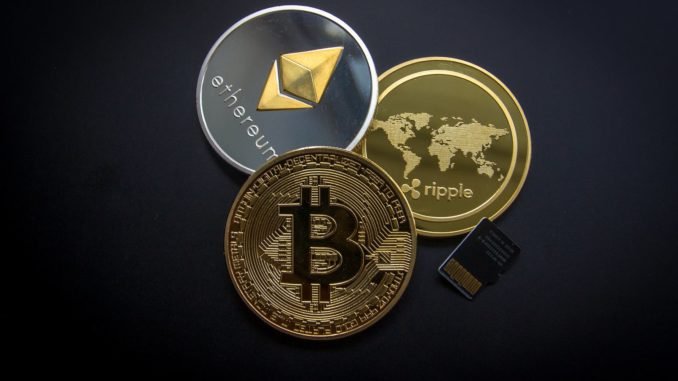
With the recent increase in popularity of NFTs on the Ethereum network, many people are unfamiliar with the technology and its purpose. In this post, you will learn what NFTs are, what problems they solve, and what the future of NFTs looks like.

What Are NFTs?
A type of virtual asset that is gaining popularity is the blockchain-based token or an NFT. An NFT stands for non-fungible token and represents a digital asset that can be owned by another person but cannot be exchanged for any other token. There are two broad types of assets in the crypto world:
- Fungible tokens
- Non-fungible tokens
Fungible tokens, such as Bitcoin, can be exchanged for the same value in another type of coin or token because they all have a standard unit of value known as their “coin supply.” Non-fungible tokens cannot be exchanged within the same coin or token. For example, if you bought a certain kind of non-fungible token on the Ethereum blockchain, that token would exist only on its own blockchain with its own independent address.
The value of an NFT increases with the popularity and success of the project behind it. They are digital assets with particular properties that make them unique compared to other digital assets. An NFT is essentially a type of collectible that can be owned, transferred, and traded. It can represent any real-world thing like a baseball card, a bottle of wine, or an artwork. The asset owner is the person who created it, and the trading happens on an open, decentralized platform.

How Do NFTs work?
NFTs work by creating a digital asset that functions as ownership of a particular physical asset. NFTs can be easily made in various ways, but some examples include art, real estate, and even cryptocurrency. NFTs are different from traditional cryptocurrencies since they are not limited by what you can use them for. For example, you can’t exchange one token for another. They are more like a digital asset that should be used in a specific application, usually the blockchain itself. An example of an application where NFTs could be used is in the gaming industry and virtual games. Online games like Fortnite have players who buy in-game items with real money and receive non-fungible tokens in return. The token will then serve as proof of ownership of an item or game character that was bought on the platform.
They are most commonly made on the Ethereum blockchain network. The Ethereum blockchain is a public, immutable ledger on which all crypto and non-crypto tokens are recorded. This distributed ledger is managed by the network of users who use Ethereum as their token (ETH). It follows a transaction fee model with some similarities to Bitcoin’s one. Some of the main advantages of using the Ethereum blockchain include:
- Ownership rights over digital assets are always guaranteed.
- Ownership rights can be transferred and traded.
- Due to the smart contracts, creators of NFTs cannot stop trading or transfer ownership without consent from other users.
- Once traded, these digital assets live as long as they are in active circulation.

How Do You Buy NFT tokens?
So you’ve learned about the value of blockchain technology, cryptocurrency, and digital assets like NFTs, and now you want to buy some? NFT tokens are not currently traded on many significant cryptocurrency exchanges. Nonetheless, this is changing as many existing crypto exchanges are beginning to list a wide range of NFTs on their platforms.
Just like cryptocurrencies, you need to buy them on an exchange of sorts called a marketplace. You will also need to use a wallet in the same manner as you might with fungible tokens to keep your assets safe. There are only a few legitimate marketplaces that currently handle most NFT transactions. One of the most popular, jungle, states that they are a place where you can buy and even sell all manner of digital assist including art, trading cards, and even virtual worlds. There are other exchanges available, but you need to ensure you are using a reputable one as there have been instances of theft and fraud resulting from the industry’s nascency.
What To Look For In An NFT Marketplace?
There are various factors that an NFT marketplace must possess to be considered the best one. A good NFT marketplace can make it seamless for users to trade their tokens and provide a safe trading environment. You should be looking for a few things in any NFT marketplace. Some of the primary considerations are:
- The security protocols are implemented to protect the user’s funds.
- The ease of use of the platform.
- If they provide a secure way to store your asset.
- The reputation of the platform and its members.
Additionally, it is essential to know what kind of tokens the platform supports and whether they have any limitations on trading them on their platform. In general, these considerations are crucial if you want to invest your money in an NFT marketplace or not.
Why Are They So Exciting?
NFTs are exciting because they create brand new possibilities for their holders. No governing body or centralized entity is responsible for issuing these assets; they’re distributed between users on an autonomous network. NFTs are becoming increasingly popular with the recent increase in the popularity of cryptocurrencies. With their decentralized nature and ability to trade or speculate on anything that exists digitally, NFTs provide investors with unique ways to speculate on items that are not tradable on other exchanges, such as securities or precious metals.
In some cases, artists use them to ensure that they can retain their intellectual property but still sell the art for others to enjoy and hold a piece of history. This can be seen with the sale of a piece of artwork by famed creator Beeple that sold for $69 million at the respected Christie’s auction house. Many speculators and analysts see this sale as the high watermark upon which all future sales will be judged.
One of the most promising aspects of non-fungible protocols is that they can be used to create new markets in the existing media and entertainment industries. With the increased liquidity and ease provided by a blockchain, there is an opportunity for artists to gain control over their intellectual property and profit from secondary markets that have been traditionally closed to them.

Leave a Reply